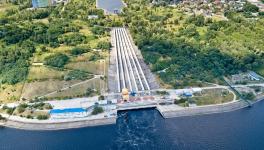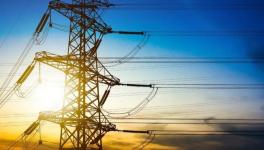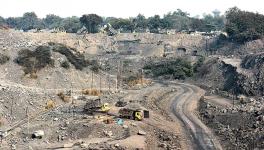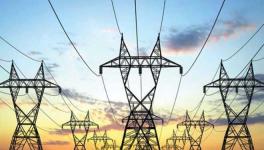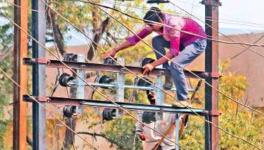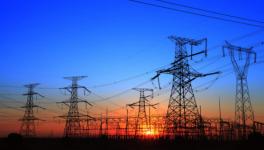Higher Electrification Comes with Heightened Risk of Fatal Accidents: Prayas
In 2014, the World Bank reported that nearly 300 million Indians live without electricity, even though they are in villages considered “electrified”. By 2018, Prime Minister Narendra Modi had pledged that his government would bring electricity to all. One unfortunate side-effect of that promise, finds Pune-based NGO Prayas, is a spike in the number of accidents that involve loss of human and animal lives or damage to property.
Using data from the Accidental Deaths and Suicides in India report put out by the National Crime Records Bureau, the NGO’s report points out that 15,258 people died in 2020 due to electric shocks or fires; and the annual General Review of the Central Electricity Authority (CEA), the records 7,717 fatal human accidents in 2020. The numbers differ vastly on account of differences in how the data might have been collected. While in many advanced countries the fatality rate in such accidents has been showing a downward trend, in India, the fatality rate has been increasing.
A state-wise analysis of the accidents shows that 85% of these have occurred in Andhra Pradesh, Chhattisgarh, Gujarat, Kerala, Karnataka, Madhya Pradesh, Rajasthan, Tamil Nadu, Telangana and Uttar Pradesh – states with extensive rural distribution and a high number of irrigation pump sets. Variations are also seen based on the consumer mix, state of maintenance of the distribution network, climatic conditions and safety awareness.
The major immediate cause of accidents, as per the report, is contact with live conductors. Poor design or maintenance and low priority to safety could be causes of this. Unauthorised repair or poor quality earthing could also causes.
The Prayas report, authored by Sreekumar Nhalur, contends that identifying the cause of accidents would need one to identify underlying gaps in the safety governance structure. Lightning also causes accidents, but since it is a natural phenomenon that requires special measures for protection, it is not considered in this report. Also, while the proportion of deaths due to lightning has remained nearly constant over the years, electrocution or electrical fire deaths has seen a rising trend.
“Our analysis indicates that most of the incidents lead to deaths, with the ratio of deaths to incidents being very close to 1. One possible reason could be that fatal accidents are more likely to be reported by the police and hence compiled into ADSI reports,” the Prayas said, showing that human fatal accidents increased from 3,239 in 2009 to 7,717 in 2020, an increase of 2.5 times in 11 years.
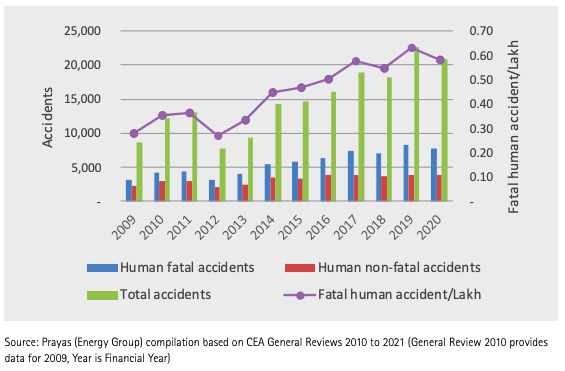
Regulations are prepared by the CEA, and all utilities are expected to follow these. Inspectors at the national and state levels are expected to ensure that these regulations are followed. While state electricity regulatory commissions oversee the functioning of the sector, they are not mandated explicitly to ensure safety.
According to the report, most accidents occur in the distribution system, and DISCOMs (distribution companies) play the biggest role in reducing accidents. However, DISCOMs are saddled with other higher priority responsibilities like improving their own financial health, reducing electricity losses in transmission, and providing reliable power to consumers. That makes safety slip through governance gaps. Long-term technical and management measures are needed to prevent accidents, adds the report.
In conclusion, the report notes that in Rajasthan, for instance, there are orders for regular safety audits and training programmes for DISCOM staff. In Madhya Pradesh and Gujarat, safety is also part of the performance measurement of DISCOMs. The Rural Electrification Corporation has conducted training in safety for staff and electricians in some states. Maharashtra has made provision for consumers to warn authorities of potential accident sites. Complaints of leaning poles or low hanging conductors can thus be set right in time. These’ good practices’ can be replicated in other states too.
The report concludes with a set of recommendations for the short- and medium-term, including better data quality and proper reporting by authorities of the site of the accidents.
However, the Prayas report does not distinguish between fatal accidents occurring in domestic units and those caused by faults in transformers and wires. Sreekumar Nhalur, the author, said the purpose of the report was to draw attention to the causes of death that are not getting as much attention.
“Reporting does not offer clear indicators of the sites of the accidents, and even in states where such questions were posed and answers were received, we found that about 60% of accidents were because of transformers or low-hanging wires. In a state like Kerala, where government response is prompt, the accidents are quite high – and this could well be because reporting is better there. We cannot tell for sure. Lines are long because houses are spread out, and people who use implements to pluck fruits from trees for instance may touch the sagging wires. In Telangana, wires go over fields, and people carrying agricultural implements may sometimes accidentally touch the wires. It is hard to establish the cause of the accident, and the purpose of this report was only to start this conversation. Much work remains.”
The writer is a freelance journalist
Get the latest reports & analysis with people's perspective on Protests, movements & deep analytical videos, discussions of the current affairs in your Telegram app. Subscribe to NewsClick's Telegram channel & get Real-Time updates on stories, as they get published on our website.











